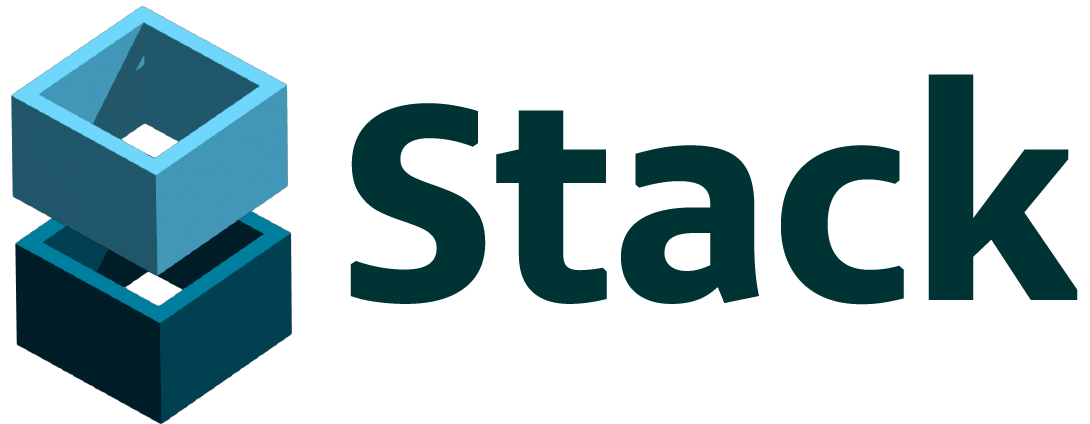Our view at Stack - Shopify has just about everything you need if you're looking to sell online. It excels with unlimited products, user-friendly setup, and 24/7 support. It offers 6,000+ app integrations, abandoned cart recovery, and shipping discounts up to 88%. Plus, it allows selling both online and in-person, scaling as your business grows.

Digital marketing is everywhere, making up more than 70% of global ad investments in 2023. Social media platforms and search engines are society’s new billboards and business cards. In fact, digital ad campaigns produced a median profit-based return on investment of $2.43 for every dollar spent in 2023, so there’s no better time than the present to harness the power of digital advertising.
The various ad formats can seem daunting if you’re new to digital advertising. But using the right ad networks is a key way to growing your audience, driving visitors to your ecommerce store, and increasing sales. Here are the best advertising platforms for your online business.
What are advertising platforms?
Advertising platforms are digital networks where you can display paid ads to promote products and reach your target demographic. They include social media platforms (like Facebook and Snapchat), search engines (like Google and Bing), digital display advertising (like Google Display Network), and video-sharing platforms (like YouTube). You can use ad platforms to create, manage, analyze, and optimize campaigns, leading to wider brand visibility and increased sales.
How to choose the right advertising platform for your business
- Determine your budget
- Identify your target audience
- Narrow your ad formats
- Measure objectives
- Learn each platform
Here’s what to consider before committing to a specific digital advertising platform:
1. Determine your budget
Ad spend is the money allocated to digital advertising. With social media platforms and search engines, you can start with any budget and scale up as results improve. On average, small to mid-sized businesses allocate 1% to 4% of their gross revenue on advertising, so this range can be a good starting point. Ad budgets can be higher for industries such as retail, especially when promoting a new product.
2. Identify your target audience
Identifying your target audience is the key to choosing the right advertising strategies and platforms. Start by outlining your ideal client’s key traits, including interests, age, location, and values that align with your business. If you’re unsure, research similar products and industry forums. Once you refine your client profile, revisit it for each campaign to ensure your efforts resonate with your audience.
3. Narrow your ad formats
Ad formats include video ads, photo ads, and text ads. Choose the format that best aligns with your product or service. For designer furniture or home décor, photo and video ads can effectively showcase product details. For services like marketing or financial advising, text ads may better communicate your value to potential clients.
4. Measure objectives
What’s the point of paid advertising if you can’t measure results? Before launching a campaign, create clear advertising objectives that you can use to determine if your paid ads are worth the ad spend.
Whether you want to use ads to increase the visibility of your brand or sell a new product line, each platform provides valuable insights into your ad campaign’s performance. Pay attention to these key metrics and adjust your campaigns as you begin to see results in each area.
- Return on investment: Revenue generated from your ad, calculated by dividing the total revenue by the total ad spend.
- Number of sales: The total number of purchases generated from a campaign.
- Cost per purchase: The cost to acquire one customer who makes a purchase, calculated by dividing your total ad spend by the number of purchases.
- Impressions: The total number of times your ad is shown.
- Reach: The number of people who see your ad.
- Clicks: The number of interactions with your ad.
- Frequency: How often your ad is seen by the same person.
5. Learn each platform
As with any new skill set, invest time to learn to use the most viable platforms for your business. This can take some trial and error. Start with a few platforms that serve your key objectives and optimize campaigns based on insights from analytics. If you have a jewelry boutique launching a new line, you might focus on the ad platforms that yield the highest number of sales and lowest cost per purchase.
Best advertising platforms
The digital landscape evolves, but some ad channels have proven their lasting value. In no particular order, here are the best-paid advertising platforms on the market:
Google has decades of experience in the realm of digital advertising. With a massive user base, sophisticated targeting capabilities, and integration with partner sites, Google Ads is the most popular search engine ad platform.
If you want to deploy ads across a wide range of websites, the Google Display Network (GDN) is a robust tool for placing native and banner ads on sites your target audience frequents.
To assess the results of your ad campaigns, Google Analytics provides in-depth specifics including real-time ad performance, consumer behavior, and engagement rates.
Types of ads on Google:
- Search ads
- Image ads
- Video ads
- Shopping ads
Meta
Meta is a social media advertising pioneer focusing on photos and videos. As the parent company of Facebook and Instagram, it offers a wide range of advertising options. The Meta Business Suite provides access to analytics and targeting algorithms, enabling seamless cross-functionality between the two applications.
Facebook Ads are useful for both B2B and B2C businesses thanks to the platform’s extensive user base (over three billion monthly active users) and powerful targeting features. Instagram Ads tend to be more lifestyle-oriented and may target a slightly younger demographic.
Types of ads on Instagram:
- Image ads
- Video ads
- Carousel ads
- Story ads
- Collection ads
- Explore page ads
- Reels ads
Types of ads on Facebook:
- Image ads
- Video ads
- Carousel ads
- Story ads
- Collection ads
- Slideshow ads
- Messenger ads
- Playable ads
LinkedIn ads are an excellent tool for businesses targeting a professional audience, especially for business-to-business communications and job search-related services. It offers ad targeting based on industry keywords, job titles, skill sets, and company sizes. Its campaign manager ad dashboard allows you to easily fine-tune your campaigns based on target audience income level, specific industries, and more.
Types of ads on LinkedIn:
- Text ads
- Image ads
- Document ads
- Dynamic ads
- Video ads
- Carousel ads
- Event ads
- Thought leader ads
- Conversation ads
TikTok
TikTok Ads are perfect for engaging younger audiences (the platform boasts 1.5 billion users, the majority of them aged 18 to 34), often leveraging user-generated content, trending music, and humor in short formats. With TikTok’s algorithm, ads can gain visibility rapidly if the content connects with an audience.
Types of ads on TikTok:
- In-feed ads
- TopView ads
- Branded hashtags
- Branded effects
- Spark ads
- Ecommerce ads
Snapchat
Capturing the youngest audience out of this list, Snapchat is a great option for products and services that capture a target audience of 13 to 34. It offers location-based ads that are perfect for pop-ups or local product launches. The app also has an incredibly high engagement rate: Users open Snapchat nearly 40 times per day, on average.
Types of ads on Snapchat:
- Image ads
- Video ads
- Collection ads
- Story ads
- Branded lenses
- Branded filters
- Commercials
- Dynamic ads
YouTube
YouTube reigns supreme for long-form video content, attracting over 2.5 billion users monthly.
Products like exercise equipment, for example, might benefit from longer videos to showcase and explain your offerings.
You can use both video ads and text-based ads that appear in search results. Google Ads integrates seamlessly with YouTube, delivering ads to the platform when your content and bidding align with Google’s criteria.
Types of ads on YouTube:
- Non-video ads
- In-feed video ads
- Skippable in-stream video ads
- Non-skippable in-stream video ads
- Bumper ads
- Masthead ads
X
X is unique for its micro-blogging format and emphasis on real-time news events. X ads are great for promoting live events, product launches, and other time-sensitive campaigns.
Types of ads on X:
- Promoted ads
- Vertical video ads
- X amplify ads
- X takeover ads
- X live ads
- Dynamic product ads
- Collection ads
Pinterest is a great platform for photo and video-centric ads highlighting visually appealing products. Pinterest users often look for inspiration for fashion, home décor, and jewelry. Feature clean, inspiring images or videos to drive sales. You can even directly link Shopify product catalogs to Pinterest posts for seamless conversions.
Types of ads on Pinterest:
- Standard pins
- Video pins
- Premiere spotlight ads
- Carousel pins
- Shopping pins
- Collection ads
- Quiz ads
- Showcase ads
Microsoft
Formerly Bing ads, Microsoft Advertising is an alternative to Google Ads, offering both search and display ads that appear when using the Bing search engine, Yahoo, AOL, and other partner sites. With less traffic than Google, the bidding landscape for ad spots is less competitive, making it more affordable. Microsoft Advertising’s OpenAI partnership lets you use AI tools to generate or suggest the most effective assets and ad formats for your target demographic.
Types of ads on Microsoft:
- App install ads
- Expanded text ads
- Dynamic search ads
- Responsive search ads
- Search ads
- Audience ads
- Multimedia ads
- Product ads
- Vertical ads
Best advertising platforms FAQ
What is the most effective platform for advertising?
The most effective advertising platform will depend upon the demographics of your potential customers and the nature of your advertising campaigns. Search ads are great for text ads and sponsored links, yet younger audiences may visit a social media network more often than a search engine.
How can you make PPC ads convert?
To make your PPC advertising campaign more successful, create ad imagery that is visually striking and appeals specifically to your audience. You may also need to adjust your audience targeting within your ad platform itself. Use ads that direct your audience to compelling landing pages with a clear call to action.
What is the cheapest place to run ads?
You can essentially use any budget within many of the ad platforms available, yet when it comes to auctions and bidding for keywords or ad spots, the prices vary. Start with the platform your audience uses most and increase ad spend as you see results.
If Shopify is of interest and you'd like more information, please do make contact or take a look in more detail here.
Credit: Original article published here.
